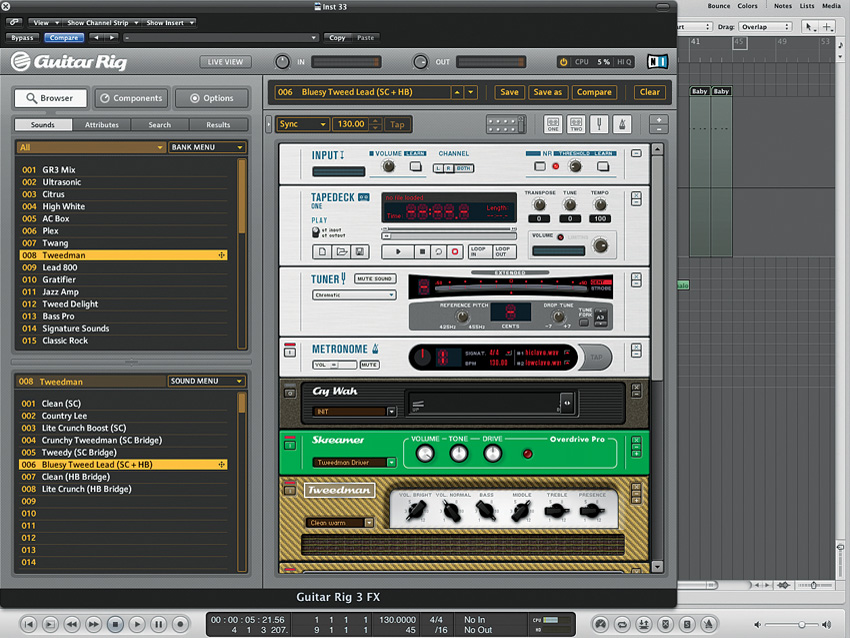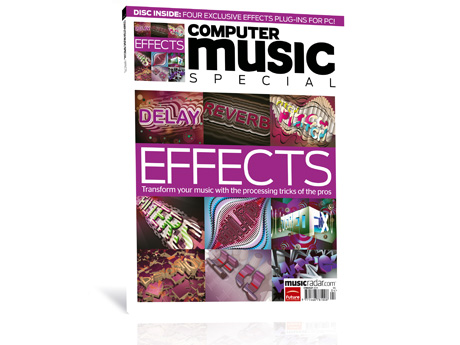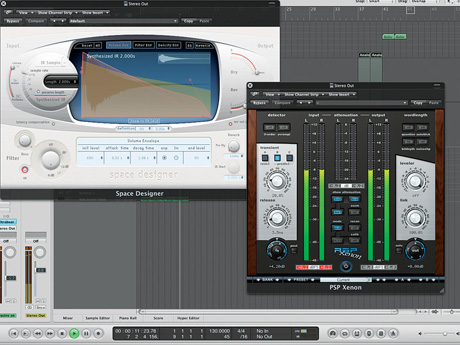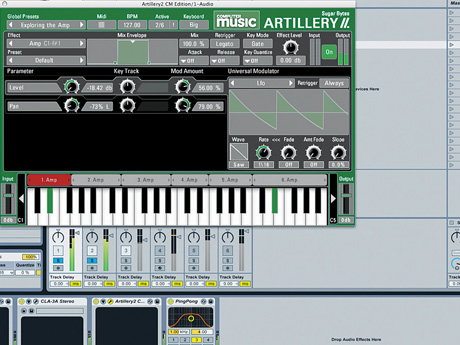11 effects chain tips

Effects chain tips

Computer Music Special: Effects
No matter how well you know your effects, it's equally important to understand which ones work best together and in what order. Hence this collection of tips, which contains both practical and creative effects chaining advice.
For a comprehensive selection of effects tutorials and techniques, check out Computer Music Special: Effects (issue 47) which is on sale now.
Amp first
Guitar amp simulator plug-ins are usually best placed at the start of a mix channel, as they are designed to be unruly and expressive rather than nicely crafted in a mix.
Of course, if you find yourself loving the sound of it, there are no hard and fast rules, but this tip is definitely more than your average guideline, so take note!
Stereo selection
It's important to be careful whereabouts in the signal path you place a stereo enhancing plug-in. If you place the plug-in after an inserted reverb or panned delay and the original sound is stereo too, you'll end up losing some of the stereo identity of the original signal.
If, on the other hand, you place the plug-in right at the start of the signal path, the effect will be a stereo signal that retains the stereo identity of the dry signal.
Creative thinking
When applying creative effects like filters, reverb and delay to the master output channel, you should be sure to place them before your master output compressor, if you're using one.
Get the MusicRadar Newsletter
Want all the hottest music and gear news, reviews, deals, features and more, direct to your inbox? Sign up here.
This is because you need to avoid the peaks and boosting effects you can get by overdriving an already compressed signal path. Of course, this is also another reason to leave plenty of headroom in your mix.

Master bus effects should come before any master compression to prevent unruly peaks and clipping.
Parallel thinking
We probably all know that stereo bass is usually best avoided for a number of reasons, so how can you add stereo width to a full sound without making the bass element 'too stereo'?
Simple - with parallel processing and some judicious use of EQ. Send your sound to a bus, add stereo width and use a filter to remove the troublesome bass end, then balance the levels.
Squash last
It's not just gates that should go first. Any dynamically sensitive plug-in, like a de-esser, de-breather or even auto-tune device will usually work best placed before any effect that squashes the dynamic range (including overdrive and saturation plug-ins), as this makes it far easier for the device to differentiate the sounds you don't want from the ones you do.
Automation action
Once you have your plug-ins in the right order, automation is one tool that can help make the most of this. For example, in parts of your track where you might want the reverb or delays to come out more, increase the amount of compression placed after them - whether on an insert or a bus - and they will become a louder and more robust part of the signal.

Smooth the effects of a glitch plug-in by placing it before a tempo delay, or place it after for maximum effect.
Filters
Filter sweeps can have a very different effect when placed before or after a delay. Placed before a delay, they can create an interesting effect when the delays of the unfiltered sound trail off over the filtered dry signal. If you're after instant filtering, however, you'll want to place the filter after the delay.
A glitch in time
Glitch plug-ins can be very dramatic, but they do tend to have a bit of jarring effect on a track's dynamics. To combat this, try placing a very firm compressor or limiter after them.
This is a particularly effective technique on more powerful and weighty channels or full mixes, and can make the difference between a juddering distraction and the perfect choppy effect.
Don't break the groove
Similarly, certain glitch effects on thinner riffs or individual elements can break up a groove too much within a swinging mix. Try placing a tempo-based delay right after the glitch effect - the delay will keep the roll going while retaining the quirkiness and excitement of the glitch. Needless to say, a bit of compression next will pull them together nicely.
Perfect your panning
When using dramatic panning or tremolo devices, the effect usually sounds better before compression and/or limiting, with the dynamics processor in linked mode if you have the option, as this keeps the right weight balance in the stereo field.
For more dramatic effects in drops, however, try it the other way around and really accentuate the difference between left and right.
Experiment
When placing a reverb and a delay on the same channel, try experimenting with their order. If you're looking for a more natural-sounding reverb, it should come after the delay, but placing the delay after the reverb can generate a more rhythmic effect, or one that sounds atmospheric and ambient.
Liked this? Now read: The effects that changed music
Connect with MusicRadar: via Twitter, Facebook and YouTube
Get MusicRadar straight to your inbox: Sign up for the free weekly newsletter









